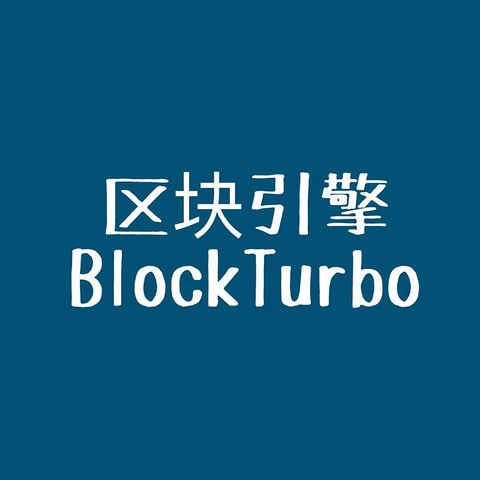Original compilation: BlockTurbo
Original compilation: BlockTurbo
On-chain governance uses the blockchain to encode its governance rules through data storage and execute its operations autonomously. On-chain governance contracts represent the closest implementation of the DAO name so far. However, the current state of on-chain governance is typically a single contract with little room for adaptability, customization, or scalability.
Most on-chain contracts require significant transaction and audit costs. A single on-chain contract can also create a lot of friction when conducting day-to-day operations. Every transaction, update, or change to the core protocol requires the consensus of the entire DAO, leading to governance fatigue, slow operations, and overall inefficiency.
picture
On-chain contracts such as Governor Bravo and OpenZeppelin allow projects to customize specific parameters. These parameters include inclusion and parameters that determine how voting rights are determined, setting a quorum, the number of voting options available, how votes are counted, the type of token used for voting, and enforcing timelocks. Despite their customizability, these systems require every governance decision to be approved by the same contract with the same parameters, limiting the viability of on-chain governance for many DAOs to run.
Element Finance Council Governance Framework
While many projects have adapted an existing set of on-chain contracts or a hybrid (off-chain) model, Element Finance opted for a more innovative approach. With the launch of the Council Protocol, the Element team hopes to build a general on-chain governance solution to meet the actual needs of daily and long-term governance.
secondary title
Core Voting Contract
The core of the Council protocol is the Core Voting Contract core voting contract. Like OpenZepplin and Compound Governor, the Core Voting Contract defines voting power, tracks proposals, and measures voting power before any proposals are executed. However, the core voting contract extends these principles by allowing for detailed granularity and modularity over contract parameters:
Dynamic voting strategies: When a user votes, the core voting contract will refer to a list of pre-approved voting strategies. These policies define the calculation of voting power and verify the user's voting power for that particular policy, allowing multiple methods to exist at the same time.
Dynamic quorum: The core voting contract allows for dynamic quorum thresholds, which check the threshold required to execute a contract call. This means that governance can change the security thresholds of any on-chain operation at a very high granularity, providing a wide range of possible access controls.
secondary title
module
While the core contract acts as a central node, modules around the core voting contract enable the new governance framework to be adapted to different use cases. These modules aim to address specific shortcomings of current DAO operations by utilizing smart contracts.
There are four specific modules, each with its associated use case:
Voting Vaults Voting Vaults
secondary title
Optimistic Grants
Optimistic Rewards
voting library
Unlike snapshots and off-chain policies, most on-chain governance contracts are limited by the number of voting rights methods they can accept. Most DAOs default to token-weighted governance, which has many drawbacks, including centralization.
Voting vaults work around this limitation by allowing protocols to define acceptable policies. The protocol can then integrate multiple voting libraries across multiple use cases, as these libraries can be upgraded and removed via the core voting contract. Voting vaults allow governance to be extended through DAOs and their protocols; as new token primitives and voting strategies are created, new vaults may emerge to satisfy these use cases. This customization unlocks the potential for entirely new approaches, strategies, and power structures for on-chain governance.
In its simplest form, a voting vault can be used as a locking or vesting vault, giving locked or vested tokens governance rights. There are also more complex vaults. For example, a DeFi vault can enable voting of tokens held in a specific protocol or contract (such as a lending agreement or LP), and an L2-L1 synthetic vault can verify L2 voting power of an L1 Merkle proof of balance.
DAOs can also use vaults to enable tokenized identity-based membership for council-like positions. These positions can be operated with special powers granted by the final authority of the DAO's core voting contract. This is clearly a good fit for Optimism Citizens' House or the Aave Grants DAO. Additionally, it opens the door to more experimental identity-based voting schemes, as proposed in the original Sushi Meiji proposal or discussed in Pocket DAO.
secondary title
Governance Steering Committee (GSC)
As DAO governance has evolved, there has been a common trend to return to some form of representative authority to combat the inefficiencies of plutocratic governance. These forms of representation are generally known as councils and are usually elected by the DAO. They typically exercise privilege over a specific set of contracts, actions or funds. The Synthetix Council and Olympus Policy Team are two examples.
The GSC module presents Element's view of the Corporate Governance Committee. Through composability with the voting library and core voting contract, DAO can choose the exact parameters to represent the GSC membership state and define the inherent permissions of the GSC. For Element, any delegator who meets the 110,000 ELFI delegation threshold can gain GSC status through a custom GSC voting vault. Thresholds of delegation are not termed by elections or appointments, but fluid delegations can be achieved. If ELFI token holders are dissatisfied with the behavior of the trustee, they can re-delegate their tokens to another trustee at any time, creating a continuous feedback loop of accountability.
secondary title
Optimistic Grants
Grants are an inherent feature of crypto culture, from the Ethereum Foundation to Gitcoin. DAOs use grants to attract builders to their ecosystem, funding them with tokens held by the treasury to improve their product and community.
Many grant programs are poorly designed. Programs that lack accountability to grantees and due diligence on grant vetting often lead to overfunding, inefficiency, and even cronyism. Others simply suffer from operational overhead as grant programs must be funded to manage accountability, track dates and funds, and coordinate multisig payments—all while checking grantee accountability and progress.
Optimistic Grants addresses these shortcomings by providing a more open funding process with less operational overhead. It operates by codifying escrow structures and aligning grantee incentives. Thus, the grants committee can pre-approve funds, apply a "set and forget" operation, and still retain the power to recover funds in the event of abuse by the grantee.
secondary title
Optimistic Rewards
In addition to grants, the same funding method applies to awards. By implementing an "approval by default" mentality, actors with permissioned powers (councils, child DAOs, etc.) can facilitate greater operational efficiency while still being held accountable. The concept is no different from the Easy Track module adopted by Lido DAO using Aragon Governance.
The Optimistic Rewards contract focuses on the rewards use case, making the contract process more secure and scalable. Traditionally, most reward systems are deployed through smart contracts. These systems require DAOs to update complex math formulas and contract integrations whenever they wish to update their reward formulas. To limit the inherent smart contract and security risks, Optimistic Rewards instead allows proposers to run a deterministic program that computes off-chain rewards and then submits on-chain rewards for review. The result is a more accountable rewards program that leverages smart contract governance to increase decentralization and efficiency.
out of contract
Finally, Element Finance has moved beyond smart contracts as the core focus of Council in order to position Council as an all-in-one governance framework. Council provides the community with a smart contract deployment template that simplifies configuration and a full set of UI interfaces. As a result, developers can leverage the reference UI using React, TypeScript, NextJS, and SDK to deploy Council contracts for their DAOs.
Conclusion and Outlook
Element Council offers an optimistic outlook and important developments for on-chain governance. Since the execution and launch of its smart contracts (developed and audited in 2021) and the first implementation of Council Protocol (launched with Element DAO in March 2022), Council has been improved and packaged as an all-encompassing DAO framework. The official Council V1 release plan will be released in batches:
Wave 0
As stated in Element's recent announcement, the governance UI for Element DAO governance has been completely overhauled with reference to the UI using the Council framework.
Wave 1
Wave 1 contains the first releases of early adopter projects that will announce their intention to integrate Council as they become more decentralized. In addition to thinking about the initial governance architecture (i.e. the modules and parameters to start with), some are building custom voting libraries on top of the Council Protocol.
Wave 2
The full public release requires the open source Council Kit repository, a dedicated educational landing page with links to all documentation, tutorials, deployment templates, and contributor guides. The Element team will continue its product discovery by engaging users and contributors in the community to develop a product roadmap with new features and improvements to ensure that future council releases more broadly satisfy DAOs, their stewards and governance practitioners or changing needs.



